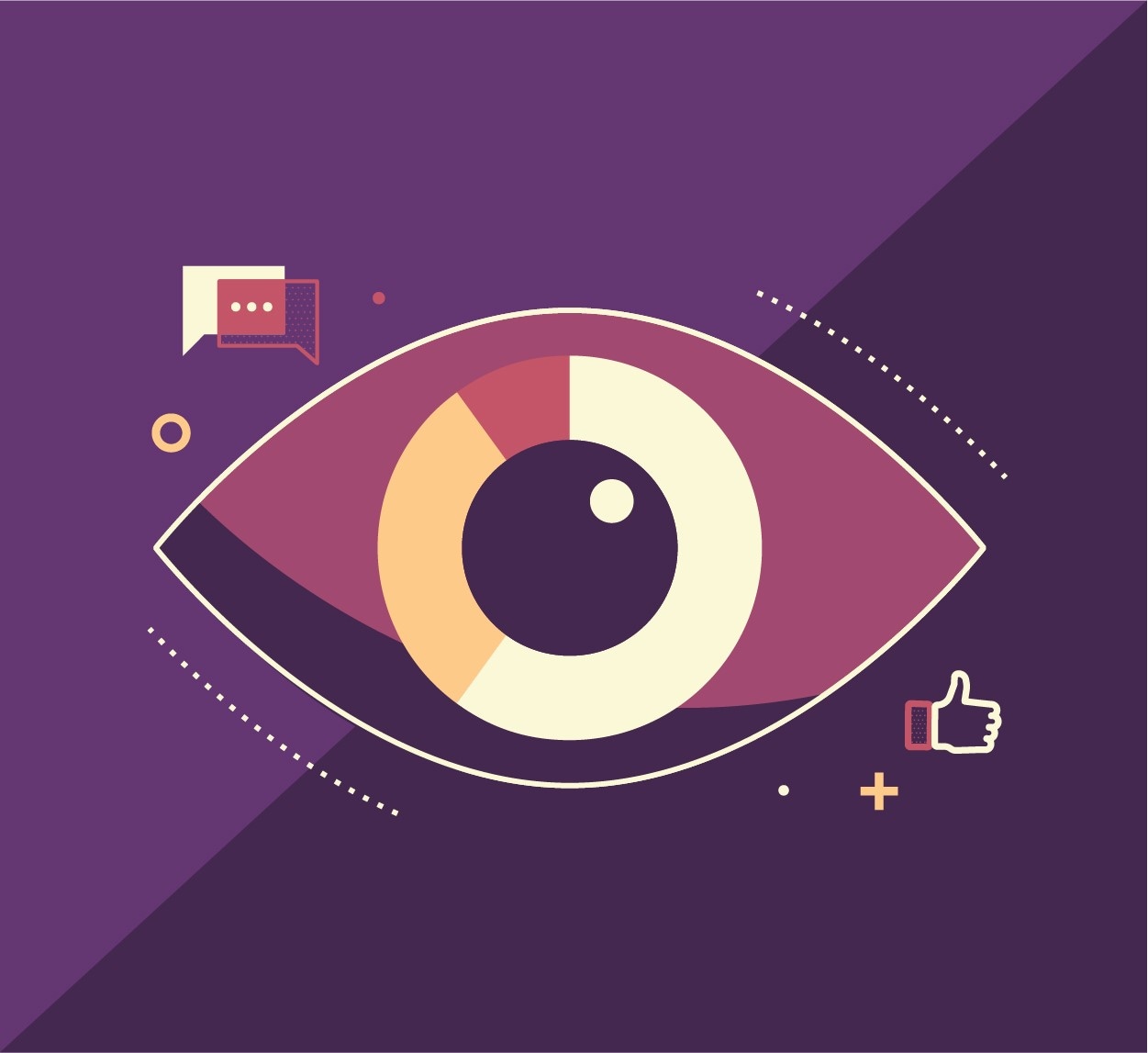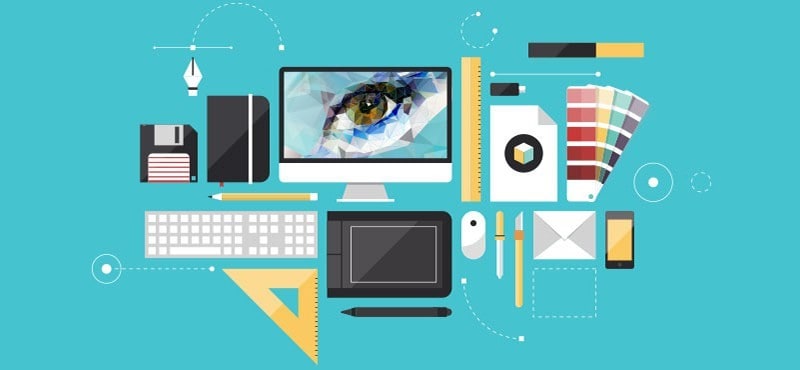Visual Design in UX Discipline

What we see is more impactful than what we listen to or hear. It is known to all and is now one of the most widespread applications in all fields. Right from education to the business, the visual approach to reach potential customers is increasing at a great pace.
Visual design is the first thing that aims to improve the product's usability and aesthetics of the site and application. A successful visual enhances the content and essence of the portal rather than overpowering it. Enhancing the user experience is one of the key functions of visual design.
The MicroCreatives infographic depicted that around 61% of the marketers believe visuals are an integral part of any successful marketing campaign. Visuals are the key to an enhanced base of loyal customers, and using effective graphics can help the visitors follow the information seamlessly.
What is Visual Design? - A Brief Introduction.
Visual Design is one of the most important factors to consider while designing the online portal. It is related to aesthetic appeal that makes the website look friendly and more usable than others. Using infographics, images, charts, tables, icons, and various visual elements, the display is enhanced, increasing trust.
The key elements for better user experience visual design are as follows:
- The point, Line, And Shapes
The basic building block of visual design is the correct use of the point, line, and shapes. It involves using the basic geometric shapes and design elements to create simple representations of complex information. The lines and shapes should act as the connecting points by properly dividing and describing the portal's idea.
- Colour Palette
There are innumerable colors available in the palette. The use of contrasting colors and differentiating shades offer the in-depth to the image used in the visual. The correct use of colors adds meaning and sense to the design. The color palette's choice should also link to the page's nature, like a meditation site should have pastel shades, while a story for kids should go for a bright palette.
- Typography
The use of fonts and alignments is important to create an impactful visual. The title should be comparatively larger as compared to the rest of the content. Also, the visual effect of the heading should ensure proper spacing and alignment. The correct use of all the factors of typography is key to managing positive and negative impacts. One should avoid the use of highly creative fonts as they can create complexity in reading.
- Balance, Rhythm, And Contrast
Balancing the various effects on the portal is important. Ensuring the rhythm and contrast are kept perfect is the key to designing a visual effect with weight. A graceful and effortless design balances the light and effect on the page. The contrast of the shades should be such that it does not stress the viewer's eyes but offers a soothing and calming experience.
- Scale
The visual content should follow the theme of moving from bigger to smaller. Scaling the content and images is important to make the user know which part is more to emphasize and which is less. The use of correct size not only makes content and visuals effective but also affirmative.
- Texture And Patterns
Texture and patterns usually refer to the nature of the background, the design, and the border. While these are considered accessories, there is no thumb rule to use them necessarily with all the outlays. These are used to give a three-dimensional effect, so one must be cautious of the use.
- Form And frame
While using any kind of image or graph in the content to aid the visual design, it is important to properly embed them in the frame. It will highlight the graphic image and make sure that the users can identify them separately. A proper form with a frame catches the attention of the users.
- Visual Concept
The idea behind the visual concept is to use the visual effect to deliver the message that you intend to most effectively and effortlessly. The design should be based on the very essence of the portal that will coherently connect the users.
- Unity and Gestalt
The idea here is to establish harmony between different pages and sections of the website by making them appear in coercion and not in a chaotic manner. The theme needs to be maintained consistently. Gestalt refers to designing the visual from the perspective of the customer for better engagement.
An Example of Everyday Visual Design.
The visual design UX is not applicable in the digital world but also the physical world. From the newspaper to billboards and websites, every method by which information is disseminated to the ultimate users, the visual effects are used to make the information more lucid.
Just think of a newspaper. Without any images or data charts or even advertisements, it will be a long list of typed words, informational but yet boring to read. Even the presentations made in the classroom on the smartboard are not accompanied by the visual design; one will eliminate the very essence of interactive learning.
Apart from when a user lands on the websites that offer information about business or news like the ET or even Wikipedia, the images and tables added on the pages are the visual design that acts as an aid to help people learn and find the information they are seeking.
The postcards, flyers, brochures, banners, and even social media ads use visual design to promote their business and connect with prospective customers. The user experience visual design is a growing concept that is applicable far and wide and is quite important in attracting potential customers.
Common Uses for Visual Design.
There are unlimited examples that one can quote related to the use of visual design. A widespread skill that acts as the power for the businesses to grow and enhance their performance by creating eye-catchy and engaging visuals for the customers, the visual design enhances the overall customer experience to a great extent.
The most common uses of the visual design are:
- Designing logos and branding of the business
- in the publication to create interactive and intuitive books, newspapers, magazines, and comics.
- A great tool for advertisements on billboards, print media, and social media platforms.
- Acting as the base for the user interface on the websites and applications to communicate with the customers.
- The best tool for packaging and promoting the products
- Develops games that are not only fun but interactive and impactful.

The relationships between Visual Design and UX.
Visual design is one of the skills that is deeply associated with the user experience and aims to offer better and enhance service to the users. While there are various aspects of effective visual design but used in harmony, it will offer a great experience. The key factors that can define the relationship between visual design and UX are:
- An effective and efficient visual design offers a greater degree of usability and performance, enhancing the overall user experience.
- When visual effects are beautiful and mesmerizing, they offer a sense of connectivity between the user and system.
- By following the visual design principles effectively, the designer provokes the user's emotions and feelings of happiness.
- If the visual system is strong, it directly impacts the customer, thus building a stronger brand value.
- By pulling all the strings correctly, a visual designer creates an aesthetic yet strategically correct image of the brand in the customer's eyes, improving the loyalty and customer experience.
Conclusion
A careful and strategically designed visual design is important to let the viewers feel connected to the business. A design that is impactful and delivers the basic idea most simply is better than highly creative and complicated. The user experience visual design is a broad concept that focuses on making effortless communication with the customers.
The key to the most effective visual design is to keep it simple, explanatory, and intuitive, which attracts users and makes them feel satisfied.

